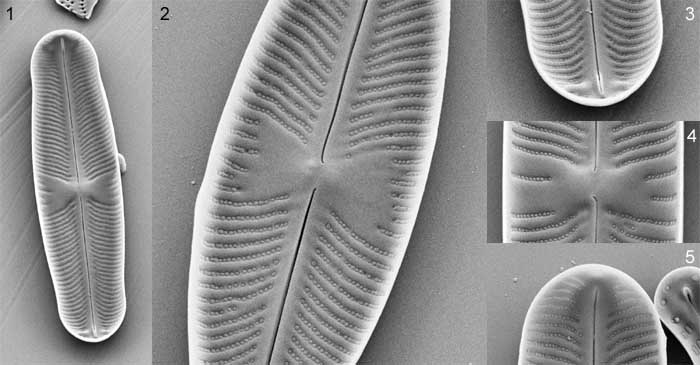Overall organization of the valve in Sellaphora: the interior
The shallow, flat-bottomed, boat-like shape of Sellaphora valves is evident in these scanning electron micrographs of the interior.
Fig. 1 shows the whole valve of a Sellaphora species belonging to the 'pupula' complex. The bow-tie–shaped central area and the small transverse bars close to the ends of the valve are characteristic of this complex. Fig. 3 shows a close-up of the polar bars. In the 'laevissima' group, on the other hand, there are no bars at the poles (Fig. 5).
In all Sellaphora species studied so far, the raphe slits turn slightly towards one side (the primary side) at the centre internally (Figs 2 and 4). At the poles, the raphe slits end internally in narrow 'helictoglossae' (raised lip-like structures; they are named for their resemblance to a rolled tongue) (Figs 3 and 5). The plain central area is slightly thickened, relative to the rest of the valve face.
The circular pores of the striae are covered internally by very delicate membranes of silica (called 'hymenes', singular 'hymen'); transmission electron microscopy of such membranes shows that they are themselves porous, being perforated by tiny holes only 5–10 nm in diameter.
None of these features is unique to Sellaphora.


 This site is hosted by the Royal Botanic
Garden Edinburgh.
This site is hosted by the Royal Botanic
Garden Edinburgh.